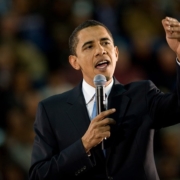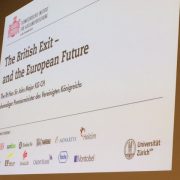Oprah Winfrey inspires her audience.
“It was 1964. I was just a little girl. I sat on the linoleum floor in my mother’s house and watched the Oscar ceremony on TV “(0:50). With these words Oprah Winfrey begins her speech. The details (cold floor, white tie and black skin) revive the event. She describes the moment when Sydney Poitier was the first black man to win an Oscar for Best Actor. This means a lot for the little girl, who at that time was following the Oscars from the “cheap seats”. This personal reference makes the speech very emotional.
In 1982 Sydney Poitier received the Cecil B. de Mille Award at the Golden Globes – the award that Oprah Winfrey is now the first black woman to receive. She skillfully draws attention to the fact that little girls are now watching again. So she refers twice to what she mentioned before: First black man/woman, little girl.
Tempo, gestures and repetition
During Oprah Winfrey’s speech, she changes tempo several times. She talks about the Hollywood Press Association, which has a lot of work to do these days: To reveal the absolute truth, to expose corruption and illegality. Her gestures support what she says:”What I know for sure is that truth is the strongest tool we have,” she emphasizes. She says she has great respect for the women who have gone public with their stories. “This year we have become history,” she says. She repeats the word “history” three times. She tries to keep eye contact with the audience – but sometimes it gets lost because of the wide-brimmed glasses.
#metoo
Oprah continues with the #metoo campaign by telling the story of the raped Recy Taylor and Rosa Parks, the woman who took care of the case. She brings her strong message with an anaphora:”Your time is up!” Their time is up! She repeats this sentence three times, while the people in the audience are torn from their seats and give resounding applause.
Come full circle
She comes full circle by returning to the little girls. With that she addresses all the girls who are watching to give them hope:”A new day is coming”. “And this day will be wonderful, especially because of the wonderful women and some phenomenal men who will make sure that no one ever has to say,” Me too!”
Conclusion
What can you learn for your own presentations from Oprah Winfrey?
- Tell personal stories
- Make references to events, history, people and facts.
If you like the post, why not share it in the social media such as Facebook, XING and Co.













 für Auslandforschung SIAF.
für Auslandforschung SIAF.